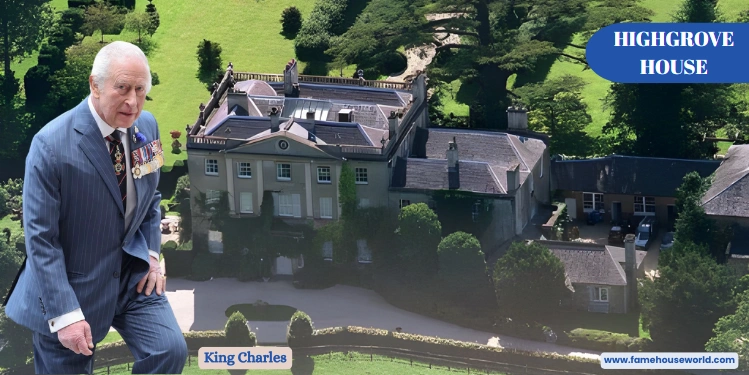where King Charles III perfected his passion for organic gardening and sustainable living? Welcome to Highgrove House, the private residence that’s been the King’s sanctuary for over four decades. This isn’t just another royal property—it’s a living testament to environmental stewardship, architectural heritage, and one of the world’s most celebrated gardens.
Located in the picturesque Gloucestershire countryside, Highgrove House has become synonymous with royal elegance and eco-conscious living. From its stunning gardens that attract thousands of visitors annually to its beautifully preserved interiors, this Georgian manor tells the story of a monarch who put sustainability at the heart of royal life long before it became fashionable.
In this comprehensive guide, we’ll take you inside the walls of this iconic residence, exploring everything from its architectural details and interior design to its world-renowned gardens and exclusive tour opportunities. Whether you’re a royal enthusiast, garden lover, or design aficionado, prepare to discover why Highgrove House remains one of Britain’s most beloved royal residences.
Last Updated: October 16, 2025
Highgrove House: Quick Facts at a Glance
| Category | Details |
|---|---|
| Owner | King Charles III |
| Location | Tetbury, Gloucestershire, England |
| Purchase Year | 1980 |
| Purchase Price | £865,000 |
| Current Estimated Value | £5+ million |
| Architectural Style | Georgian Neoclassical |
| Year Built | 1796-1798 |
| Building Status | Grade II* Listed Building |
| Total Estate Size | 900 acres |
| Main House Bedrooms | 9 bedrooms |
| Floors | 3 stories |
| Exterior Material | Bath stone (honey-colored) |
| Garden Size | 15 acres of ornamental gardens |
| Garden Style | Organic, mixed formal & informal |
| Notable Features | Walled Garden, Stumpery, Wildflower Meadow, Natural Swimming Pool |
| Sustainability Features | Solar panels, reed bed sewage system, ground-source heat pumps, rainwater harvesting |
| Tour Availability | April – October (gardens only) |
| Tour Duration | Approximately 2 hours |
| Tour Price | £27.50-£30 per adult |
| Distance from London | 115 miles west |
| Famous For | Organic gardening, environmental innovation, royal family home |
Disclaimer: Information gathered from public records, authorized publications including official Highgrove materials, architectural surveys, media interviews with estate staff, and visitor accounts. Property details may change over time.
The Royal Ownership: King Charles’ Private Sanctuary
Highgrove House was purchased by the Duchy of Cornwall in 1980 specifically for the then-Prince Charles, who was seeking a country retreat. Acquired for approximately £865,000, the property has since become the King’s most personal residence—far more intimate than the grandeur of Buckingham Palace or Windsor Castle.
The nine-bedroom Georgian manor, built in 1796-1798, sits on a 900-acre estate in Tetbury, Gloucestershire. What makes this property truly special isn’t just its royal pedigree, but how King Charles transformed it into a model of organic farming and sustainable architecture over the past 40+ years.
Unlike other royal properties, Highgrove was purchased as a private family home where Charles could raise his sons, Prince William and Prince Harry, away from the public eye. The house witnessed countless family moments, from childhood garden adventures to intimate dinner parties with world leaders and environmental advocates.
Today, the property is estimated to be worth over £5 million, though its true value lies in its historic significance and the King’s lifetime of environmental work conducted within its grounds.
Highgrove House Gloucestershire: Location & Setting
Nestled in the heart of the Cotswolds, near the market town of Tetbury in Gloucestershire, Highgrove House enjoys one of England’s most idyllic settings. The estate sits approximately 115 miles west of London, offering the perfect balance of rural tranquility and accessibility to the capital.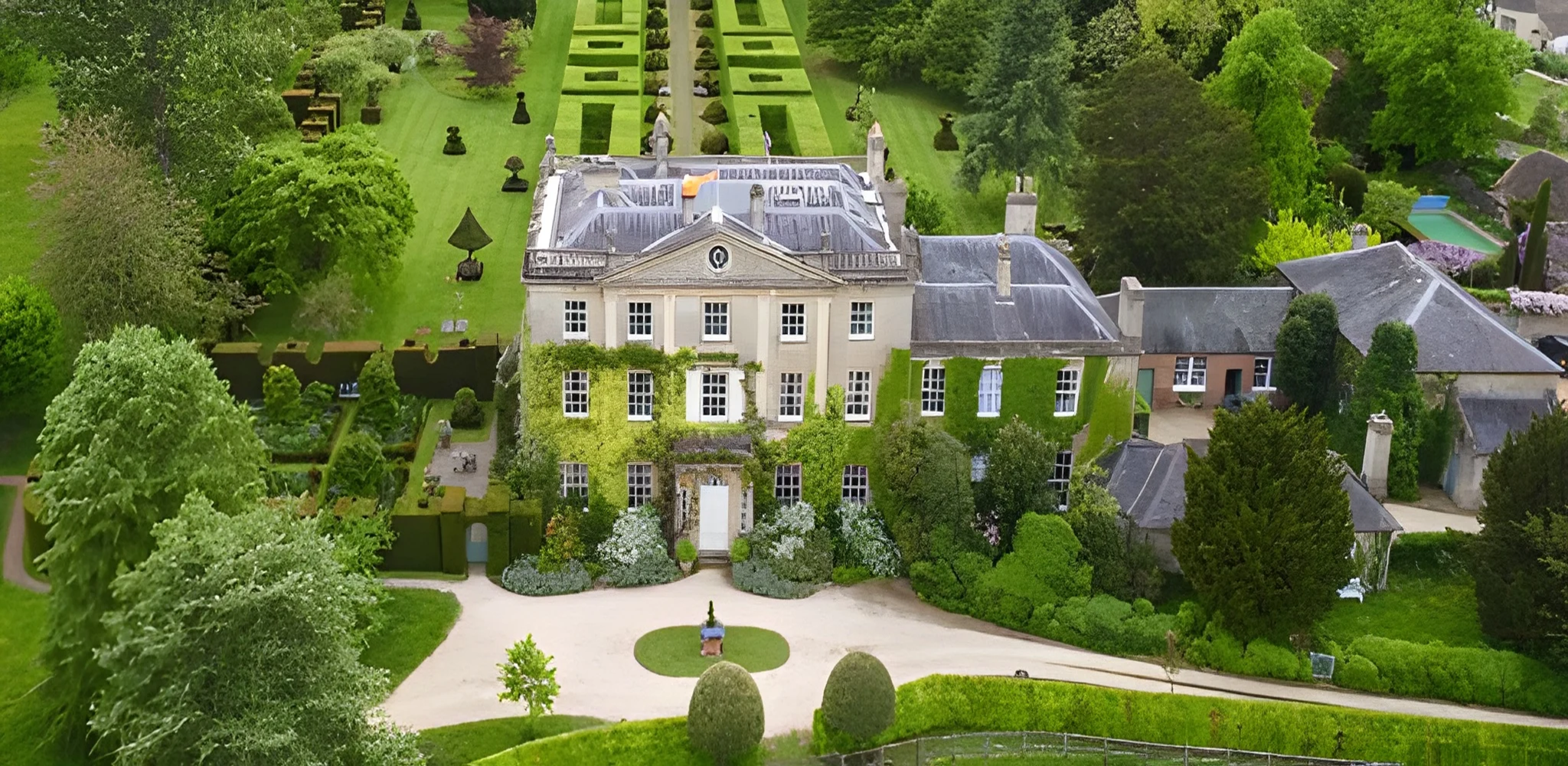
The Gloucestershire Countryside
The surrounding area is characterized by:
- Rolling hills and limestone valleys typical of the Cotswolds Area of Outstanding Natural Beauty
- Traditional honey-colored stone villages that have remained virtually unchanged for centuries
- Rich agricultural heritage that inspired the King’s organic farming initiatives
- Privacy and security provided by the expansive estate grounds
The nearest neighbors include fellow members of the aristocracy and countryside dwellers who value the area’s peaceful charm. The location was deliberately chosen for its distance from London’s media scrutiny while remaining close enough for royal duties.
Property Specifications
Total estate size: 900 acres
Main house: 9 bedrooms
Built: 1796-1798
Architectural style: Georgian Neoclassical
Current estimated value: £5+ million
The grounds include working farmland, woodland areas, formal gardens, and various outbuildings that have been converted into guest accommodations and functional spaces for the King’s environmental initiatives.
Architectural Heritage: Georgian Elegance Meets Sustainability
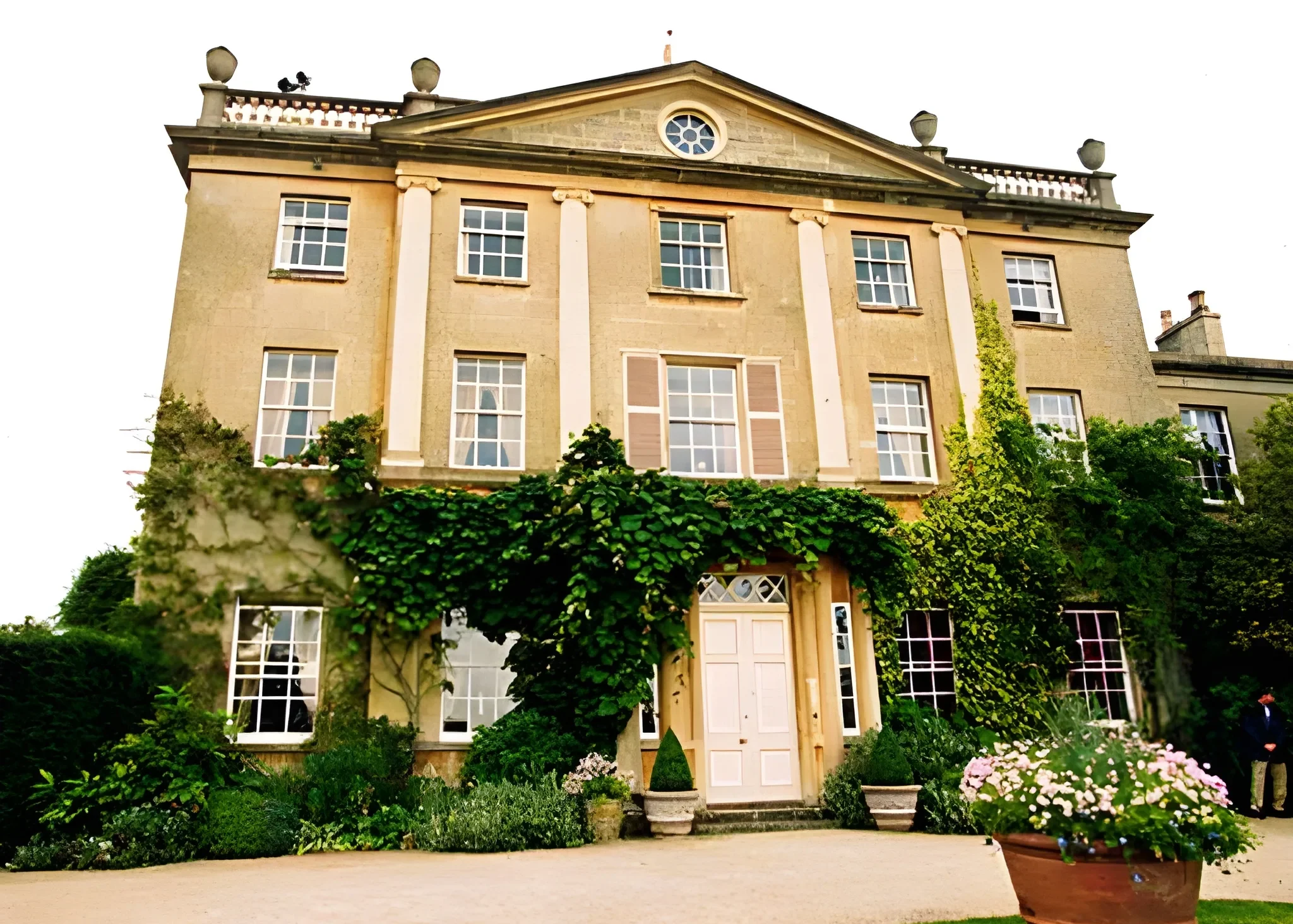
Highgrove House is a Grade II* listed building, reflecting its significant architectural and historical importance. The main residence exemplifies classic Georgian Neoclassical architecture with its symmetrical façade, sash windows, and balanced proportions.
Exterior Design Elements
The honey-colored Bath stone exterior features:
- Three-story central block with perfectly proportioned windows
- Ionic columns flanking the main entrance
- Decorative pediments above key windows
- Traditional slate roof maintained to conservation standards
- Wisteria and climbing roses that soften the formal stonework
What sets Highgrove apart from other Georgian estates is King Charles’ sensitive approach to conservation. Rather than imposing modern interventions, he’s enhanced the building’s original character while incorporating cutting-edge sustainable technologies invisibly integrated into the historic fabric.
Sustainable Architecture Features
The King pioneered several eco-friendly additions:
Reed bed sewage system that naturally processes wastewater
Solar panels discreetly positioned away from public view
Ground-source heat pumps for efficient heating
Rainwater harvesting systems for garden irrigation
Sustainably sourced timber for all restoration work
These innovations demonstrate that historic architecture and environmental responsibility can coexist—a philosophy that has influenced conservation projects worldwide.
Highgrove House Interior: A Blend of Tradition and Personality
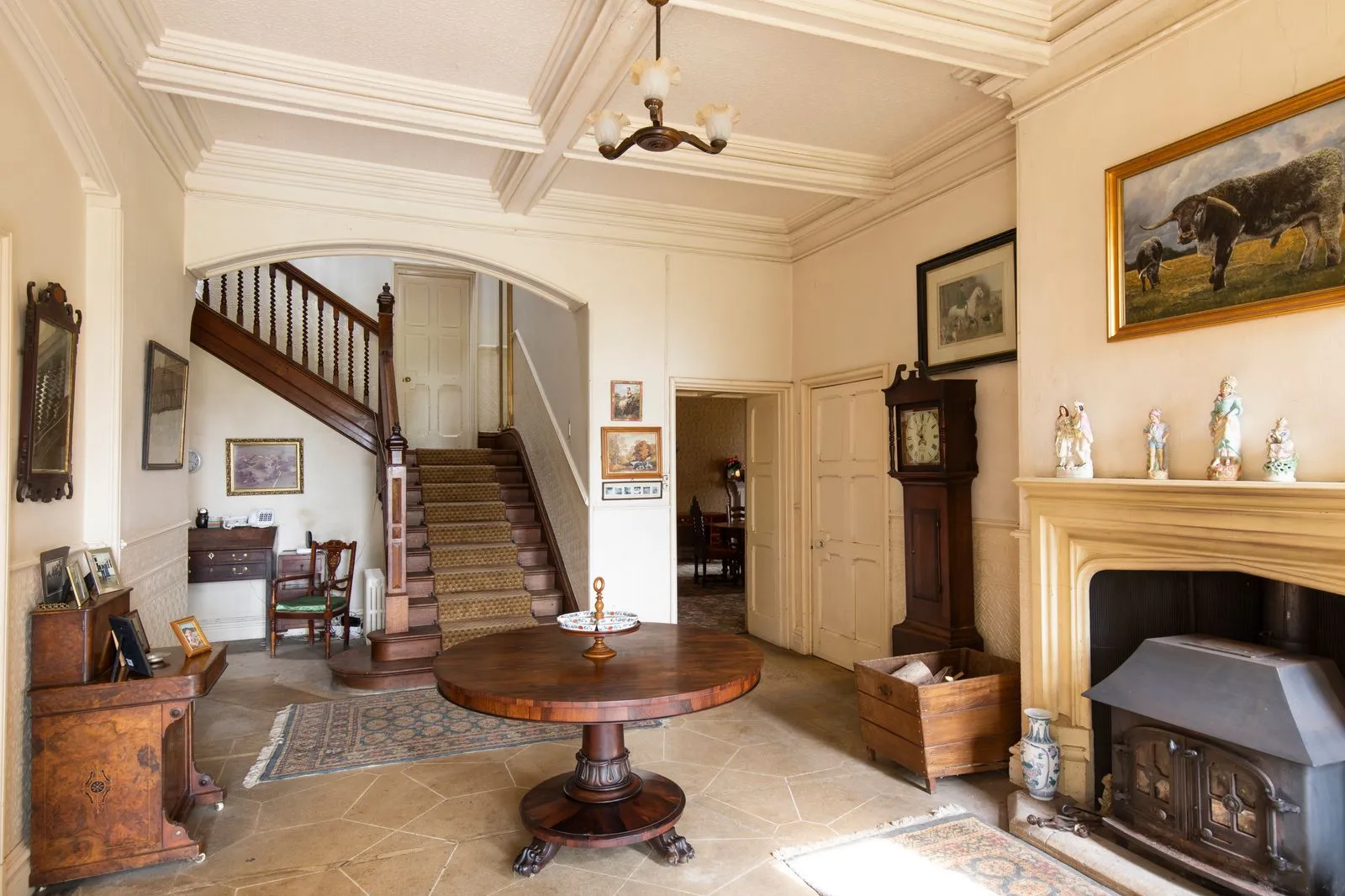
While photography of the Highgrove House interior remains limited due to privacy considerations, interviews and authorized publications reveal a home that reflects King Charles’ eclectic tastes and deep appreciation for British craftsmanship.
The Entrance Hall
Visitors are greeted by a traditional Georgian entrance hall featuring:
- Black and white checkered marble flooring
- Collection of landscapes and portraits including works by royal favorites
- Antique furniture carefully selected from estate sales and family collections
- Fresh flowers from the garden arranged in classical urns
The atmosphere strikes a balance between formal grandeur and welcoming warmth—very much a family home rather than a museum.
Drawing Rooms and Living Spaces
The principal reception rooms showcase traditional British interior design with personal touches:
Comfortable upholstered furniture in rich fabrics from British textile houses
Art collection including contemporary works and family portraits
Extensive bookshelves reflecting the King’s wide-ranging intellectual interests
Antique lighting fixtures restored and maintained
Needlepoint cushions created by family members
The color palette tends toward warm earth tones—terracottas, sage greens, and golden yellows—that connect the interiors visually with the gardens beyond.
Dining Room
The formal dining room has hosted everyone from foreign dignitaries to environmental activists. Features include:
- Long mahogany dining table seating up to 14 guests
- Silver service from royal collections
- Views over the garden terraces through tall sash windows
- Organic produce from the estate served at every meal
King Charles is known for his preference for intimate dinner parties where meaningful conversation takes precedence over ceremony.
Private Quarters
The upper floors contain the family bedrooms, private sitting rooms, and the King’s personal study. These spaces remain strictly off-limits to tours, preserving the home’s essential function as a private retreat.
The King’s bedroom reportedly features:
- Antique four-poster bed with handwoven textiles
- Views across the parkland to distant hills
- Personal collections of books and artworks
- Simple, uncluttered aesthetic despite the royal occupant
Highgrove House Floor Plan: Understanding the Layout
While detailed Highgrove House floor plans are not publicly available for security reasons, the general layout follows traditional Georgian architecture principles:
Ground Floor
- Central entrance hall with symmetrical reception rooms on either side
- Drawing room (south-facing for afternoon light)
- Dining room with terrace access
- Morning room/library for informal gatherings
- Kitchen and service areas (modernized but historically sympathetic)
- Garden room leading to the terraces
First Floor
- Principal bedroom suites (4-5 rooms)
- Guest bedrooms
- Private sitting rooms
- Bathrooms modernized with eco-friendly fixtures
Second Floor
- Additional guest rooms
- Staff accommodations (historically)
- Storage and attic spaces
Outbuildings
The estate includes numerous converted structures:
Orchard Room – guest accommodation
Thyme Walk Cottage – additional guest house
The Sanctuary – luxury B&B open to public booking
Working farm buildings for the organic operation
The layout prioritizes views of the gardens from every major room, reflecting the King’s conviction that connection to nature is essential for wellbeing.
Highgrove House Gardens: A Horticultural Masterpiece
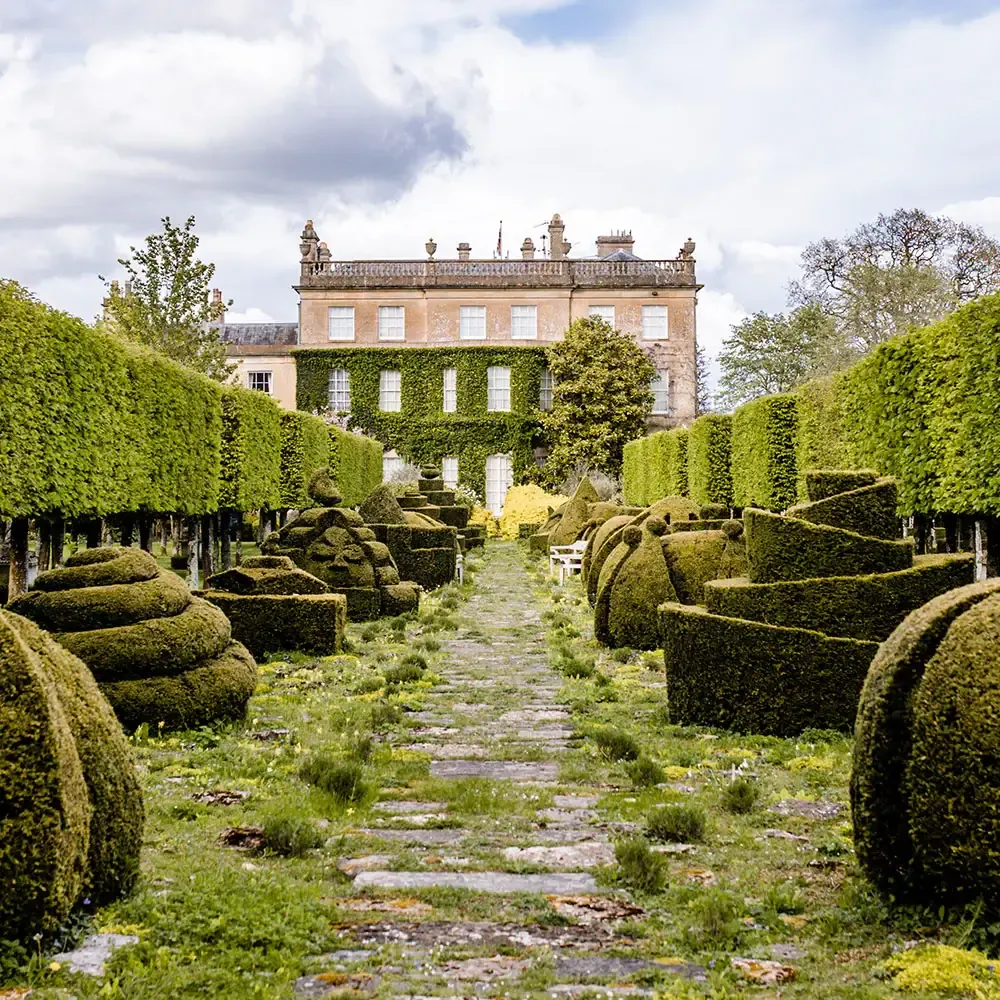
Here’s where Highgrove truly shines. The Highgrove House gardens are considered among the finest examples of organic gardening in the world, representing over 40 years of the King’s personal vision and hands-on involvement.
The Transformation Journey
When Charles arrived in 1980, the grounds were fairly conventional farmland with minimal ornamental planting. What followed was a gradual transformation into a series of distinct garden “rooms,” each with its own character and purpose.
Key Garden Areas
The Wild Garden
- Naturalistic planting inspired by cottage garden traditions
- Native wildflowers supporting pollinators
- Winding paths creating discovery and surprise
- Bronze and stone sculptures integrated into the landscape
The Walled Garden
- Formal vegetable beds supplying the royal kitchens
- Espaliered fruit trees along warm stone walls
- Companion planting demonstrating organic pest control
- Central fountain as a focal point
The Cottage Garden
- Traditional English planting with roses, delphiniums, and hollyhocks
- Color-coordinated borders changing seasonally
- Dense, layered planting that eliminates need for mulch
- Handmade wooden structures and supports
The Arboretum
- Collection of rare and native trees
- Underplanted with shade-loving perennials
- Woodland walks with spring bulbs
- Memorial trees planted for significant occasions
The Stumpery
- Innovative use of upturned tree stumps as sculpture
- Shade garden featuring ferns, hostas, and woodland plants
- Inspired by Victorian stumperies but with contemporary sensibility
- Demonstrates beauty in natural decay and regeneration
Water Features
- Naturalistic pond supporting wildlife
- Fountain gardens with classical design elements
- Reed bed system visible as an educational feature
- Bog gardens extending the planting palette
The Highgrove House Swimming Pool
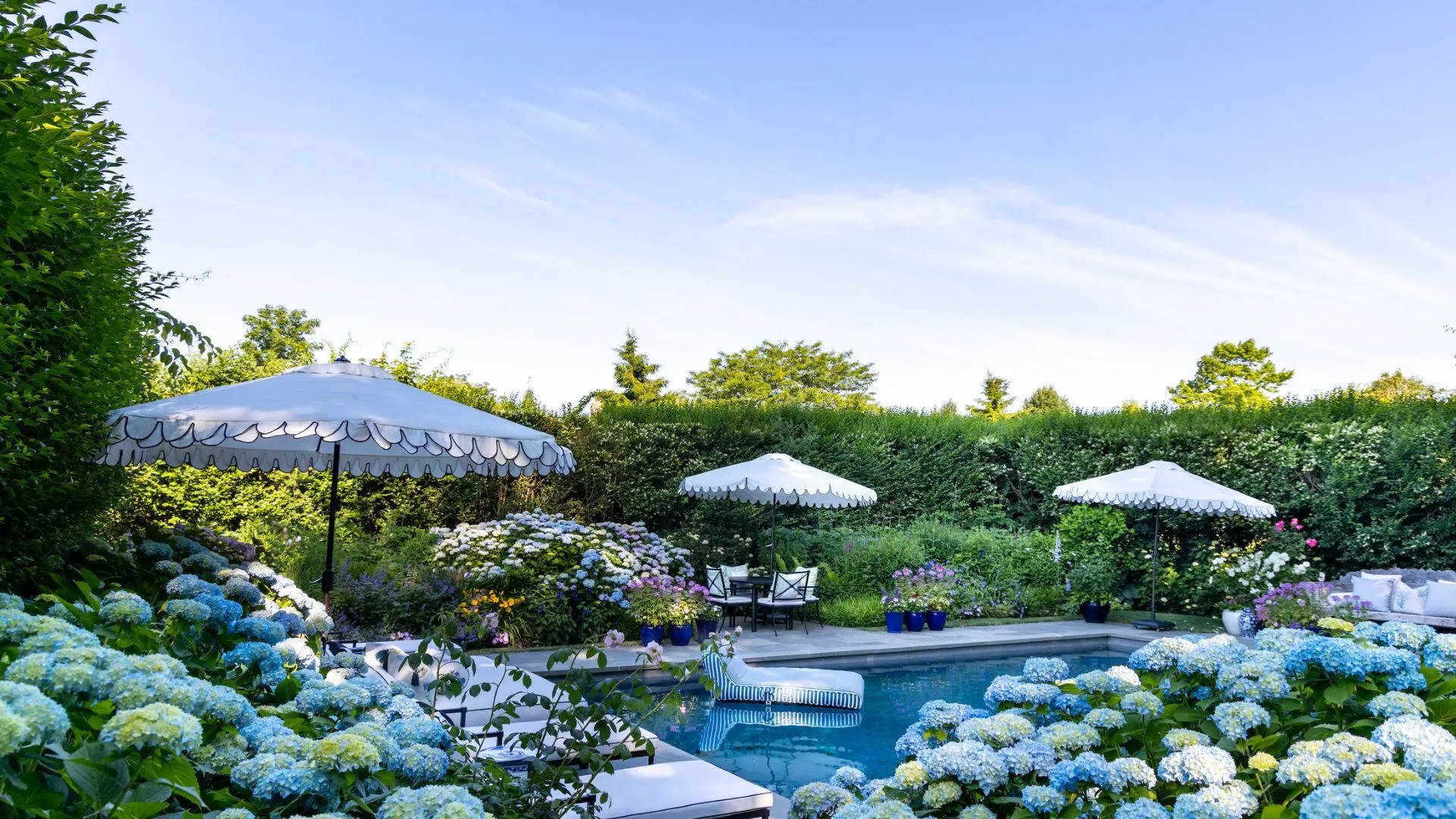
While Highgrove House swimming pool isn’t typically open to tour visitors, the property does include a private pool area designed to blend seamlessly with the garden aesthetic:
- Natural pool design using plants and beneficial bacteria rather than harsh chemicals
- Surrounded by Mediterranean-inspired planting including lavender and rosemary
- Stone paving in keeping with the estate’s traditional materials
- Privacy screening through strategic hedge planting
The pool represents another example of the King’s commitment to working with nature rather than against it—creating recreational spaces that function as mini-ecosystems.
Organic Gardening Philosophy
Every aspect of garden maintenance follows strict organic principles:
No chemical pesticides or herbicides
Composting all garden waste
Companion planting for natural pest control
Encouraging beneficial insects and birds
Using only peat-free compost
Saving seeds from heritage varieties
Rotating crops in vegetable beds✅✅✅✅✅✅✅
These practices have made Highgrove a living laboratory, proving that large-scale ornamental gardens can thrive without environmental harm.
Highgrove House Tours: Visiting This Royal Residence
Unlike many royal properties managed by the Royal Collection Trust, Highgrove House tours are organized through Highgrove Gardens & Shop, with all proceeds supporting the King’s charitable initiatives.
Tour Information
Season: Tours run from April through October
Duration: Approximately 2 hours
Group size: Limited to small groups for intimacy and garden protection
Price: £27.50-£30 per adult (2024 pricing)
Booking: Must be reserved well in advance via highgrovegardens.com
What Tours Include
Guided walk through all major garden areas
Expert commentary on organic gardening techniques
Access to areas not visible from public paths
Tea and refreshments in the Orchard Room
Opportunity to purchase from the estate shop✅✅✅✅✅
What’s NOT Included
Interior access to the main house (private residence)
Photography inside certain areas (for privacy)
Meeting the King (though he occasionally makes surprise appearances!)❌❌❌
Special Tours
For true enthusiasts, occasional specialized tours offer:
Head Gardener Tours – deeper technical insights
Seasonal Specialty Tours – focused on specific blooming periods
Lunch Tours – including meal from estate-grown produce
Overnight Experiences – staying at The Sanctuary with private garden access
Visitor Reviews
Guests consistently rate Highgrove tours as exceptional experiences:
“Unlike any other garden tour—you truly understand the King’s vision and dedication. Every plant has purpose.” – TripAdvisor Review
“The guides are incredibly knowledgeable, and the garden’s beauty is matched by its environmental significance.” – Garden Visitor Magazine
“Worth booking months in advance. This isn’t just a garden; it’s a philosophy made visible.” – Royal Enthusiast
Highgrove House Hazyview: Clearing Up the Confusion
Interestingly, searches for “Highgrove House Hazyview” often appear in relation to King Charles’ residence. However, this refers to a completely different property—a luxury guesthouse called Highgrove House located in Hazyview, South Africa, near Kruger National Park.
The South African Highgrove
The Hazyview Highgrove House is:
- A boutique lodge and spa offering safari experiences
- Located in Mpumalanga Province, South Africa
- Known for luxury accommodations and wildlife proximity
- Completely unrelated to the royal Gloucestershire estate
This confusion highlights how the name “Highgrove House” evokes images of elegance and refinement—inspiring property owners worldwide to adopt the name for their own establishments.
For clarity: When discussing King Charles’ residence, we’re always referring to Highgrove House, Gloucestershire, England—not any international properties sharing the name.
Design Philosophy: Where Tradition Meets Innovation
What makes Highgrove truly remarkable is how it bridges seemingly contradictory concepts:
Historic Preservation Modern Sustainability⚖️
The estate demonstrates that:
- Georgian architecture can accommodate solar technology
- Formal gardens can be wildlife havens
- Traditional craftsmanship supports environmental goals
- Royal heritage can inspire contemporary action
Influences and Inspiration
King Charles drew inspiration from:
Classical gardens – Versailles, Villa d’Este, and English landscape tradition
Arts and Crafts movement – William Morris and Gertrude Jekyll
Islamic garden design – geometric patterns and water features
Permaculture principles – working with natural systems
Botanical science – plant associations and ecosystem support
Designer Collaborations
While the King’s personal involvement is paramount, he’s worked with several renowned designers:
- Rosemary Verey – influential garden designer who helped shape the early vision
- Julian and Isabel Bannerman – created the Stumpery and several architectural elements
- Mollie, Marchioness of Salisbury – advised on historical accuracy
- The Duchy of Cornwall team – ongoing maintenance and development
Visit Also: Skywalker Ranch
Media Coverage and Public Fascination
Highgrove House has captured public imagination through decades of media attention:
Documentary Features
“The Royal Gardeners” (2022) – ITV documentary exploring the estate’s horticultural significance
“Harmony” (2010) – Documentary based on the King’s book about sustainable living
Various news features – Particularly during major royal events and anniversaries
Literary References
The King himself has written about Highgrove in:
- “Highgrove: Portrait of an Estate” (1993)
- “The Garden at Highgrove” (2000)
- Various articles on organic farming and architecture
Social Media Presence
The official @HighgroveGarden social media accounts share:
- Seasonal garden updates
- Behind-the-scenes glimpses
- Educational content on organic practices
- Tour availability announcements
Public Sentiment
The property has largely received positive attention as:
A model of environmental stewardship
Demonstration of royal dedication beyond ceremonial duties
Proof that luxury and sustainability coexist
Accessible royal property (through tours) connecting monarchy with public✅✅✅✅
Critics occasionally question the carbon footprint of maintaining such an estate, though supporters note the educational and inspirational value far outweighs the resource use.
Conclusion: A Royal Legacy Growing into the Future
Highgrove House stands as perhaps King Charles III’s most personal legacy—a living, growing testament to the environmental principles he’s championed for decades. More than just a beautiful country estate, it’s a working model demonstrating that historic architecture, horticultural excellence, and ecological responsibility can flourish together.
From its elegant Georgian facade to the innovative reed bed sewage system, from formal terraces to wildflower meadows, every element tells a story of thoughtful stewardship. The Highgrove House gardens have inspired countless homeowners, landscape designers, and environmental advocates to reconsider their relationship with the land.
Whether you’re planning to book one of the coveted Highgrove House tours, researching sustainable garden design, or simply fascinated by royal residences, this Gloucestershire gem offers endless discovery. It proves that true luxury isn’t about excess—it’s about harmony with the natural world.
FAQs About Highgrove House
Where is Highgrove House located?
Highgrove House is located near Tetbury in Gloucestershire, England, approximately 115 miles west of London in the heart of the Cotswolds. The exact address is not publicly disclosed for security reasons, but the estate sits on 900 acres of Gloucestershire countryside.
How much is Highgrove House worth?
While purchased for approximately £865,000 in 1980, Highgrove House is currently estimated to be worth over £5 million. However, this valuation doesn’t account for the historic significance, the world-renowned gardens, or the decades of organic farming improvements that make it truly priceless.
Can you visit Highgrove House?
Yes! Highgrove House tours are available from April through October. Tours cover the extensive gardens but not the interior of the main residence. Tickets must be booked in advance through the official Highgrove Gardens website, with prices around £27.50-£30 per adult. All proceeds support the King’s charitable causes.
Who designed Highgrove House and gardens?
The main house was built in 1796-1798 in Georgian Neoclassical style. The gardens represent King Charles III’s personal vision developed over 40+ years, with professional input from renowned designers including Rosemary Verey, Julian and Isabel Bannerman, and Duchy of Cornwall horticulturists. The King remains actively involved in all design decisions.
